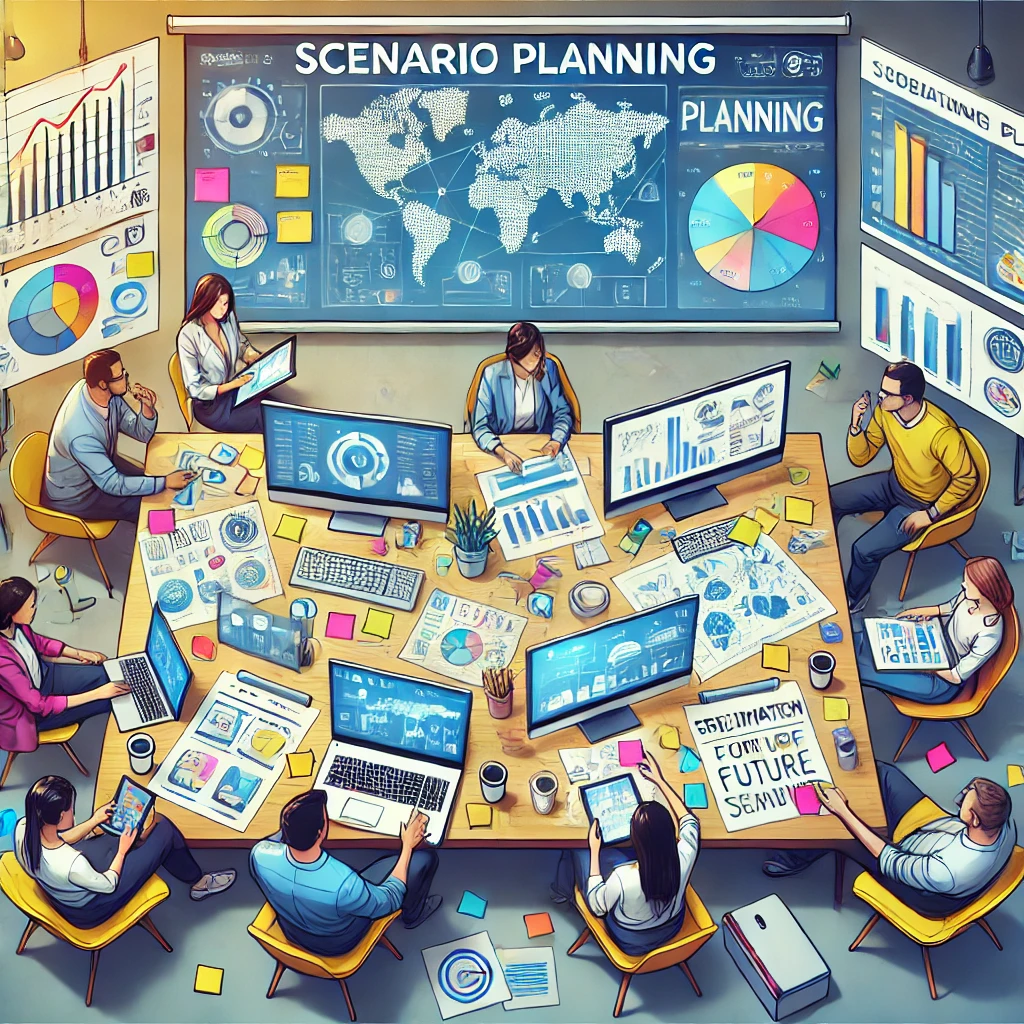The Top Ten Reasons Every Organization Should Use Scenario Planning
In a world where change is the only constant, organizations need more than traditional planning to stay ahead. Scenario planning offers a dynamic approach to strategic thinking, enabling leaders to anticipate and adapt to multiple potential futures. By fostering flexibility, resilience, and innovation, this method empowers organizations to navigate uncertainty better and align their actions with long-term goals.
Here are the top ten reasons why scenario planning is an essential tool for any forward-thinking organization.
- Navigating Uncertainty Organizations operate in environments characterized by complexity and rapid change. Scenario planning equips leaders with tools to anticipate a range of potential futures, helping them navigate uncertainty with confidence and adaptability.
- Strategic Flexibility Traditional planning often locks organizations into a single pathway. Scenario planning fosters strategic flexibility, enabling businesses to pivot as circumstances evolve without losing sight of their overarching goals. In many cases, the shift they need to make will be anticipated, and in the best of circumstances, practiced and created as contingencies so they can change direction more quickly than the competition.
- Improved Decision-Making By considering diverse possibilities, scenario planning broadens perspectives, encouraging leaders to weigh multiple variables and outcomes. This reduces cognitive biases and enhances decision-making processes, leading to more resilient strategies.
- Identifying Risks and Opportunities Scenario planning reveals hidden risks and uncovers opportunities that might be overlooked in linear forecasting. This proactive approach empowers organizations to mitigate threats and seize advantages before their competitors.
- Encouraging Collaborative Thinking Engaging stakeholders in scenario planning fosters collaboration across departments. When diverse perspectives are integrated, organizations gain a richer understanding of potential impacts, making strategies more comprehensive and inclusive.
- Enhancing Organizational Agility The practice of envisioning various futures prepares teams to act swiftly when faced with disruptions. Agility becomes a competitive edge, enabling organizations to turn challenges into growth opportunities.
- Strengthening Leadership Resilience Leaders involved in scenario planning develop a future-oriented mindset. This not only builds individual resilience but also cultivates confidence in steering the organization through volatility and ambiguity.
- Aligning Long-Term Vision with Immediate Actions Scenario planning bridges the gap between long-term aspirations and short-term decisions. By visualizing the interplay between today’s actions and tomorrow’s outcomes, organizations can maintain alignment between strategy and execution.
- Driving Innovation Exploring alternative futures often sparks innovative ideas. Scenario planning encourages teams to think creatively about how to adapt to or shape emerging trends, fueling a practice of innovation.
- Creating a Shared Narrative Effective scenario planning creates a shared language and narrative about the future. This alignment ensures that everyone in the organization understands the strategic priorities and works cohesively towards shared goals.
The Case for Action
In an era of disruption, organizations cannot afford to rely solely on static strategies. Scenario planning transforms uncertainty into a strategic advantage by fostering resilience, flexibility, and foresight. Whether addressing technological shifts, economic volatility, or societal changes, scenario planning empowers organizations to thrive in complexity.
When thoughtfully executed, scenario planning doesn’t just prepare organizations for the future—it positions them to help shape it.

